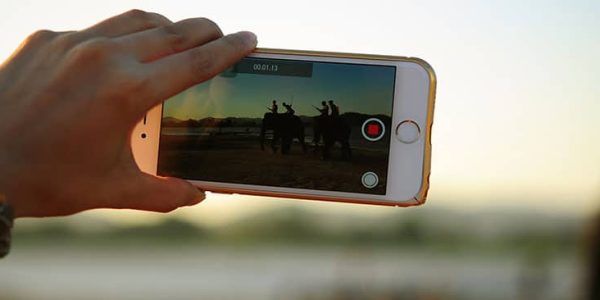Over the last few years, new trends have emerged that have had an enormous influence on how marketing organizations collaborate, communicate, innovate and evolve. As digital marketers, we live in a fast-paced world where the rules and strategies change on a daily basis. One minute you think you have nailed the latest trends and the next you are throwing your hands up wondering why you can’t keep ahead of the changing market.
Here are the top trends that Element212 believes can help to boost your marketing strategies to help you attract, engage, and retain your ideal customers.
1. Live Streaming
It’s no surprise that video continues to dominate social. Expect to see a continued shift towards video content and in particular, live video. Video streaming was 75% of all internet traffic in 2017 and there are no signs showing things will slow down. Studies found viewers watch live streams 3x longer than prerecorded video. Look for major platforms such as Facebook, Twitter, Instagram and Snapchat to double down on live videos by improving feed quality and adding more interactive features.
2. Mobile Video
Mobile video ad spend will grow 49% in 2018, reports Recode, while non-mobile video ad spend is expected to fall 1.5%. You can expect to see a decline of video consumption on laptops and computers for the first time — while video views on phones and tablets is expected to grow by 25%. The average viewer is expected to watch 36 minutes of online video per day on a mobile device, as opposed to half as much — roughly 19 minutes — on a computer.
3. Growth Hacking
Also known as growth driven tactics, these are marketing processes specifically targeted for increasing growth in revenue. SEO is the still one of the best growth hacking strategies simply because you are getting more traction from people who are already inquiring about your product or service. As technology evolves to allow additional search options, you have to adjust your strategy to meet your audience where they are looking for you. Attracting leads with awesome content and exciting twists (such as a giveaway or a challenge) can help move the dial in converting these leads to sales.
4. Explainer Videos
Explainer videos are short, uncomplicated videos that explain your company’s product or service. They pack a big punch when it comes to driving results. The visual elements in an explainer video help viewers understand more about what’s explained with only a few short sentences. On websites where an explainer video is present, they are 4x (wirebuzz.com) more likely to watch the video than to read text on the page. An example of an industry that’s taking on explainer videos head on is Healthcare — where animated videos can work best to communicate complicated ideas and educated the patient beyond their doctor visit.
5. Chat Bots
We’ll continue to see a sharp rise in companies integrating chatbots as a valuable communication asset that helps drive marketing strategy and improve customer support. In fact, it is estimated that 85% of interactions will be with chatbots by 2020, according to Gartner. Chat bots are driven by a predefined workflow and help drive customer engagement and facilitate faster conversions by answering questions or offering suggestions. Use of chat apps has actually surpassed the use of social media and audiences will expect it from most companies.
6. Viral Content
When you hear viral, you think cute cat cuddling with a newborn. When doctors hear viral, they think of a disease. When marketers hear viral, they see brand awareness and dollar signs. Everyone wants to have their content go viral. Marketing teams are doing everything they can to develop and procure viral-worthy content that leads to revenue. However, creating content that has potential to go viral is very challenging and needs to be authentic, funny, witty and relatable.
7. Geofencing
For many, their mobile devices are becoming one with their body. Wherever we go, the device goes. On average, users trigger 75 separate mobile sessions per day, which means they engage with the device throughout their day across lots of locations. Marketers use geofencing technology to define a geographic boundary. Then, once this “virtual barrier” is established, the marketer can set up triggers that send a text message, email alert, or app notification when a mobile device enters (or exits) the specified area. Geofencing allows businesses to section off a geographic area and communicate with their target audience through their devices within that space.
2018 is shaping up to be another exciting year for new and innovative ways to reach consumers and increase brand awareness. Rapid development in technology will continue to keep marketers on their toes as they explore, invest, experiment and adapt new marketing strategies in order to keep up with the changing marketing trends.









